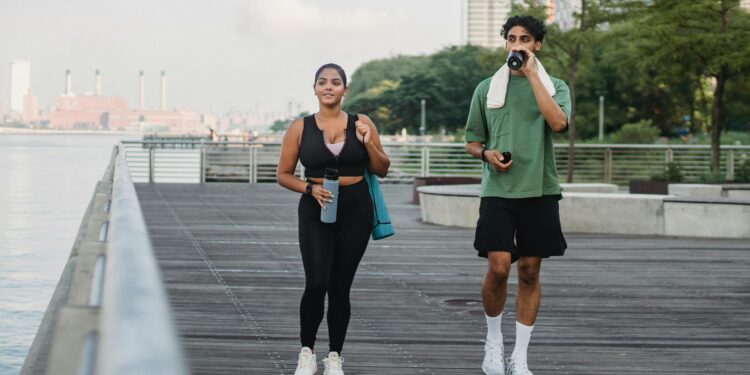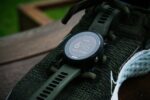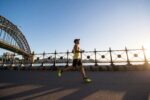Walk as Workout: The Rise of Hot Girl Walks and Rucking Culture

In recent years, the benefits of walking have caused the most fundamental of movements to undergo a quiet revolution. No longer dismissed as the “beginner’s workout,” it’s now being celebrated as an elite form of cardio, a mindfulness practice, and a cultural trend with social clout.
From the viral Hot Girl Walks popularized on TikTok to the military-inspired rise of rucking, walking is being reframed as a powerful tool for fitness, wellness, and even identity.
More than just a way to move from point A to point B, walking is emerging as one of the most versatile forms of exercise. With communities forming on platforms like Strava and influencers documenting every step on Instagram, the benefits of walking are gaining visibility and reshaping fitness culture in 2025.
The Hot Girl Walk: A Viral Fitness Phenomenon
The Hot Girl Walk started as a TikTok trend but quickly evolved into a cultural movement. Coined by TikToker Mia Lind, the concept reframes walking as more than exercise. It became a ritual of self-confidence and empowerment. Participants were encouraged to walk four miles a day while focusing on gratitude, personal goals, and self-affirmation.
This simple rebrand tapped into something deeper: walking wasn’t just about burning calories, it was about building a mindset. The psychological benefits of walking, from reducing anxiety to fostering clarity, suddenly aligned with aesthetics, community, and identity.
Now, #HotGirlWalk boasts millions of views and has inspired spinoffs across genders and age groups.
Rucking: The Functional Fitness Upgrade
While Hot Girl Walks leaned on self-affirmation, rucking introduced intensity. Rooted in military training, rucking involves walking with a weighted backpack. This twist adds resistance, building endurance and strength while maintaining the joint-friendly aspects of walking.
Fitness influencers on Strava have embraced rucking as a hybrid of cardio and strength training, presenting it as the natural evolution for those who want to elevate their routine.
The benefits of walking in this form include improved posture, greater calorie burn, and functional strength development. For many, rucking strikes the perfect balance between challenge and accessibility.
The Science: Why Walking Works
Part of walking’s newfound popularity lies in its science-backed efficiency. Research consistently shows that brisk walking can lower blood pressure, improve heart health, enhance mood, and even reduce the risk of chronic illnesses like diabetes. Unlike high-impact workouts, walking is low-risk and sustainable over a lifetime.
One of the best benefits of walking is that it also enhances creativity and problem-solving. A Stanford study famously demonstrated that people generate more creative ideas when walking compared to sitting. In a culture obsessed with productivity and mental optimization, one of the best benefits of walking is that it is a wellness hack hiding in plain sight.
Digital Walking Culture: Strava and Social Validation
Fitness is no longer a private pursuit. Apps like Strava and wearable fitness trackers have gamified walking, turning every stroll into a trackable, shareable, and socially validated event. Whether logging Hot Girl Walks, rucks, or treadmill sessions, walkers can now connect with friends, join challenges, and compare stats globally.
This social element has amplified walking’s appeal. Beyond the benefits of walking itself, the digital layer creates accountability, competition, and community. Much like running clubs of the past, digital walking groups are now forming across continents, united not by speed but by consistency and shared mindset.
Walking Pads and the Indoor Evolution
Not all walks happen outdoors. The rise of remote work has sparked interest in the walking pad, a compact treadmill designed to fit under desks or in small apartments. These devices allow professionals to accumulate steps while working, making walking a seamless part of daily life.
While critics dismiss walking pads as yet another tech-driven wellness fad, they underscore how walking is being adapted to modern routines. Even at low speeds, walking pads encourage movement during sedentary office hours, extending the benefits of walking into productivity and workplace wellness.
From Solitude to Social Ritual
Walking has traditionally been solitary, but the new wave of walking culture emphasizes connection. Hot Girl Walks are often done in groups, rucking clubs are popping up in cities, and Strava feeds are filled with enthusiasts encouraging one another.
This reflects a broader trend: walking is no longer just a workout, it’s a social ritual. Meeting a friend for a walk replaces sitting in a café. Family strolls after dinner become a wellness practice. Even online walking groups where people sync their walks virtually bring a sense of belonging.
Walking as Status: The New Aesthetic
In fashion and lifestyle spaces, walking has been reframed as aspirational. Influencers curate the aesthetic of their walks with branded water bottles, chic activewear, and scenic backdrops. The Hot Girl Walk isn’t just about steps. It’s about documenting one’s journey for social platforms, while backed by the many benefits of walking.
Similarly, rucking has carved out its own aesthetic: rugged, functional, and practical. The cultural messaging is clear: walking can signal identity, values, and lifestyle choices. It’s no longer just about fitness. It’s about how you frame and share the act itself.
Bridging Health and Identity
The current reframing of walking captures a unique intersection of fitness, culture, and self-expression. For some, walking is mindfulness in motion. For others, it’s functional training. For many, it’s a chance to belong to a community that values consistency and self-care over intensity.
By weaving together science, culture, and aesthetics, the benefits of walking have transcended the activity’s “basic” reputation. The benefits of walking, physical, mental, and social, are now recognized as powerful tools in building identity, confidence, and lifestyle alignment.
Walking Into the Future of Fitness
Walking’s transformation is more than a passing trend. It represents a shift in how society views movement: less about performance metrics and more about sustainability, mindfulness, and community.
From the empowering affirmations of Hot Girl Walks to the functional grit of rucking, the benefits of walking have established the activity as one of the most versatile fitness practices of our time.
As apps like Strava, devices like walking pads, and social media aesthetics continue to shape the culture, the humble act of putting one foot in front of the other is now a statement: fitness can be simple, inclusive, and deeply impactful.
In 2025, the benefits of walking are not only measurable in health outcomes but also visible in how it reshapes culture. Walking is no longer the warm-up. It’s the workout, the ritual, and the revolution.
Will you be buying wearables and rucking gear for outdoor walks, or do you prefer to stay indoors with a walking pad?








